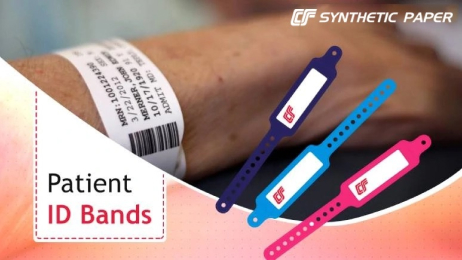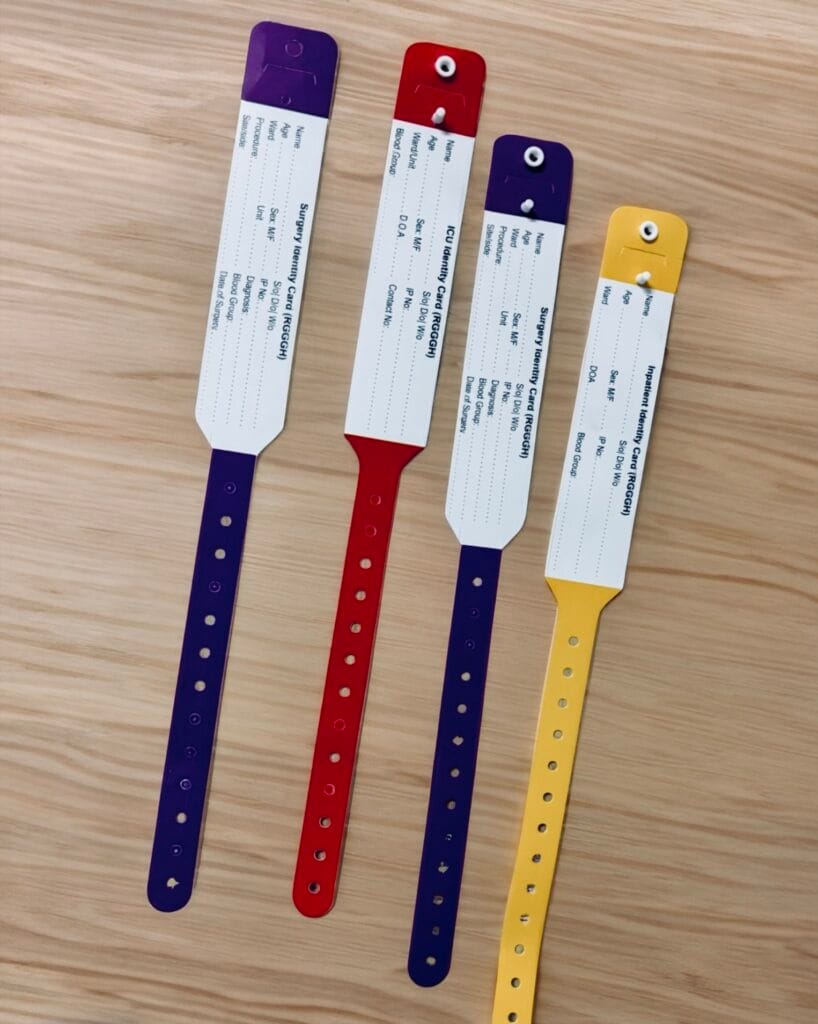Making Certain Specific Medication Administration with Patient Identification Band
Improving Individual Treatment With Efficient Identification Bands
The implementation of efficient recognition bands is a pivotal component in boosting patient treatment within healthcare settings. These bands not only serve to minimize the dangers related to person misidentification but additionally simplify interaction among clinical employees, thus fostering a safer environment. Numerous kinds of recognition bands accommodate particular requirements, from sturdy wristbands for grownups to specialized bands for infants and crucial instances. As the landscape of individual identification progresses, one need to think about the ramifications of these systems on overall health care delivery and individual end results. What developments wait for in this essential location?
Value of Patient Recognition
Making certain accurate patient recognition is important in medical care setups, as it straight impacts the security and quality of care offered. Misidentification can lead to serious mistakes, including carrying out the incorrect drug, performing inaccurate procedures, or miscommunicating crucial client details. Such errors not just endanger client safety yet can additionally result in lawful ramifications and lowered trust fund in healthcare systems.
Reliable client identification is basic to establishing a secure atmosphere where people get customized and suitable care. It helps with the exact paperwork of medical backgrounds, allergies, and therapy plans, making certain that doctor have accessibility to necessary information whatsoever times. Furthermore, durable identification methods help streamline interaction among clinical team, boosting cooperation and decreasing the threat of mistakes.

Sorts Of Identification Bands
Recognition bands play a crucial function in maintaining exact client documents and enhancing safety and security within medical care environments. Different sorts of identification bands are used to satisfy the specific requirements and demands of different person populaces.

An additional type is the ankle band, which is especially valuable for newborns and babies, making sure that recognition remains intact also throughout treatment procedures. Specialized bands, such as those for allergy signals or fall danger signs, provide additional layers of safety and security by drawing immediate attention to crucial person conditions.
Recently, electronic recognition bands have actually gained appeal, including barcodes or RFID technology that can be scanned to swiftly obtain client information. These bands enhance operations and minimize the threat of human mistake throughout patient identification processes.
Advantages of Reliable Recognition
Reliable recognition of clients with making use of recognition bands adds dramatically to overall client security and care high quality. By making sure that each individual is properly determined, medical care companies can efficiently match medical treatments and procedures to the correct person, minimizing the risk of errors. This is particularly essential in settings with high client turnover, where the potential for misidentification is better.
In addition, effective identification bands enhance interaction amongst health care groups. Clear and precise person recognition promotes partnership and guarantees that all staff member recognize an individual's details requirements and medical background. This communication is necessary for providing coordinated treatment, especially in emergency circumstances where time is crucial.

Inevitably, reliable identification with making use of identification bands not only safeguards patients but additionally advertises a culture of safety within medical care centers (Patient Identification Band). By prioritizing accurate recognition, medical care companies can enhance results and enhance the total client experience
Carrying Out Identification Equipments
While the value of client recognition is well identified, the implementation of durable identification systems postures a complicated challenge for health care organizations. Establishing effective recognition systems requires a comprehensive strategy, encompassing modern technology, workers training, and process assimilation.
First, organizations should select ideal identification modern technologies, such as barcode scanning, RFID, or biometric systems. Patient Identification Band. These innovations must be reviewed based on price, usability, and compatibility with existing facilities. A pilot program can help recognize prospective concerns before full-blown execution
Next, thorough training for staff is crucial. All personnel should recognize the importance of precise person identification and be skilled in using the chosen innovations. Normal training updates and assessments can enhance finest techniques and More hints ensure continued compliance.
Furthermore, healthcare companies must create standardized procedures for individual recognition throughout all departments, reducing discrepancies and improving communication. Normal audits can help identify spaces in adherence to these procedures.

Eventually, an efficient application of identification systems not just boosts individual safety and security however likewise fosters a society of responsibility and diligence within healthcare settings, guaranteeing reliable and regular person care.
Future Trends in Individual Identification
Advancements in technology are established to revolutionize person recognition methods in health care setups. The assimilation of biometric recognition methods, such as fingerprinting and face recognition, is anticipated to enhance precision and safety and security. These innovations can dramatically reduce the danger of misidentification, making sure that patients obtain the appropriate therapies and medications.
Furthermore, the implementation of blockchain modern technology for client documents is gaining grip. This decentralized method can offer a secure Go Here and tamper-proof technique for managing person identities, therefore simplifying accessibility to important information across different medical care companies.
One more fad is the enhancing usage of mobile health applications that leverage QR codes for person identification. These applications enable real-time updates and easy accessibility to patient information, encouraging healthcare experts check over here to make enlightened choices promptly.
Additionally, expert system (AI) is poised to play a vital role in evaluating person recognition information, identifying patterns, and anticipating prospective recognition mistakes before they happen.
As these modern technologies advance, they promise not only to boost patient security however likewise to improve the general performance of medical care distribution systems. Embracing these developments will certainly be critical for future-proofing patient care practices.
Conclusion
In verdict, reliable recognition bands are essential for boosting person safety and care quality within healthcare settings. By lessening the threats connected with misidentification, these bands promote prompt and exact information retrieval, eventually boosting communication amongst medical care suppliers. The execution of durable identification systems not only promotes a society of safety and security but also placements medical care institutions to adjust to future patterns in patient identification technology, making sure ideal results for people in diverse professional settings.
As the landscape of individual identification advances, one need to take into consideration the effects of these systems on overall health care distribution and client results.Efficient client recognition is basic to establishing a protected environment where individuals receive personalized and proper care. Inevitably, prioritizing efficient client identification approaches not only promotes a culture of safety and security but also adds to enhanced patient outcomes and total contentment with health care services.
Reliable recognition of clients through the use of identification bands adds considerably to total patient safety and security and care quality. The implementation of durable identification systems not just promotes a culture of safety yet additionally placements healthcare organizations to adapt to future trends in client recognition modern technology, ensuring optimal outcomes for individuals in diverse professional environments.